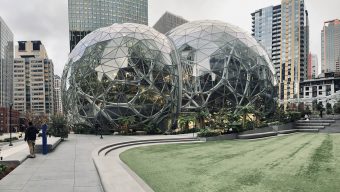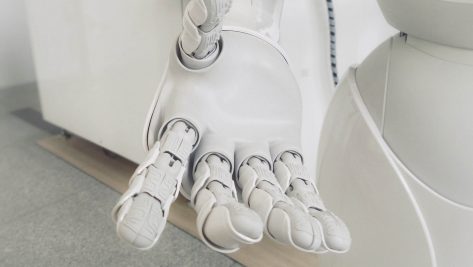Imagine this: every time you type a question into ChatGPT, a glass of clean drinking water is silently poured into the desert sand. Digital interactions are supposedly weightless, frictionless, immaterial. Yet, the reality is that each query consumes water. And in a world where 2.2 billion people still live without access to safe drinking water, this invisible cost is not just unsustainable – it is profoundly unethical.
In 2023, Pengfei Li of the Rochester Institute of Technology and coauthors calculated that every 20 to 50 questions to a large language model like ChatGPT require the equivalent of a 500 ml bottle of water, mostly for cooling the servers that generate responses. This means that each single prompt may “drink” somewhere between 10 and 25 milliliters. It sounds small until you start counting your own daily use. Twenty prompts in a workday could already amount to half a liter. A hundred queries across meetings, brainstorming, and research? Two to five liters – more than what many people in drought-prone regions can access in a day. Suddenly the question becomes personal: how much water does your cloud consume each day?
Now scale this to society. We tend to think of AI as “the cloud,” an ethereal space that sits above our heads, detached from the earth. But this cloud is grounded in concrete, metal, and silicon; it is tethered to rivers, reservoirs, and aquifers. Every question is processed in a data center somewhere, and each of those facilities requires enormous amounts of water to keep the servers cool and the system running.
Morgan Stanley projects that AI-related data centers could consume more than 1 trillion liters annually by 2028, an elevenfold increase from 2024. Nearly half of the world’s 9,000+ data centers are already located in regions of high water stress. In Spain, Amazon requested a 48% increase in water permits for its Aragón facilities in late 2024. In the UK, a government report projected a daily shortfall of nearly five billion liters by 2050 unless digital infrastructure is integrated into water planning. These are not abstract numbers. They are liters of drinking water redirected from agriculture, ecosystems, and communities into the invisible machine of artificial intelligence.
Even the tech giants are being forced into transparency. In 2025, Google disclosed that each query to its Gemini assistant consumes 0.26 ml of water – or, five drops. On paper, that may sound negligible, but multiply it by billions of queries every day, and the impact becomes staggering. And researchers caution that these figures underestimate the full footprint, since they often exclude water used indirectly in electricity generation or in semiconductor manufacturing. AI is not just an algorithm. It is a physical, thirsty machine that draws from the same finite resources as everyone else.
And yet, paradoxically, the same technology that is rapidly consuming water is also helping to conserve it. For example, Vintel is a decision app for winegrowers that claims to improve grape production and sustainability by decreasing irrigation by 45-80%. According to a case study by ASTERRA, the UK utility SES Water, which serves parts of Surrey, Kent, and South London, used satellite analytics to achieve a 24% reduction in water loss through leak detection. Also in the UK, predictive flood models and nature-based infrastructure designed by international engineers have stored 58,000 cubic meters of stormwater, recharging aquifers and reducing flood risks. AI can be both consumer and savior – a paradox that forces us to rethink the entire water-energy-digital nexus.
This dual identity raises urgent ethical questions. Is it legitimate to allocate millions of liters of water to train AI models in drought-prone regions while local communities face scarcity? Why do so few companies disclose AI-related water use separately, despite increasing pressure from regulators and investors to provide full lifecycle accounting?
And who decides where new data centers are built? In Aragón, Spain, protests erupted under the slogan “Your cloud is drying my river,” reflecting tensions between global tech giants and local residents. In Santiago, Chile, Google’s data center in Cerrillos has faced criticism over its water usage, with court filings indicating consumption of around 7.6 million liters of potable water per day – in a region already suffering from severe drought. In the U.S. Southwest, where drought has intensified scrutiny of industrial water use, companies including Google and Microsoft have faced local criticism for the millions of liters required to cool their data centers. In Mesa, Arizona, Google’s facility was initially able to use up to 15 million liters of water per day for cooling, but the company has since moved toward air-cooling systems designed to reduce potable water consumption.
For companies, credibility will hinge on making AI’s water footprint visible.
UNESCO has reaffirmed that access to water is a human right. The debate is not only about efficiency, but about justice – and companies are beginning to respond. As outlined in the European Commission’s Water Resilience Strategy, the EU aims to strengthen water governance and resilience across sectors, for example including new performance standards for high-water-use industries such as data centers. In the UK, policymakers have begun to factor digital infrastructure into national water planning, introducing new reporting requirements for data center consumption. The private sector is also moving. Microsoft has pledged to be water positive by 2030 – replenishing more water than it consumes – while Google has launched dozens of projects to restore local watersheds as part of its own water stewardship goals. Companies are also experimenting with new cooling systems that reduce or even recycle the water used to keep servers from overheating.
The way forward is not about abandoning AI but about building wise AI systems that conserve more water than they consume. Companies such as Google and Microsoft are already training AI models at night or in cooler regions to reduce cooling demand and evaporation losses. At the infrastructure level, liquid and direct-to-chip cooling systems can reduce water use by up to 90% compared with traditional methods. According to Arup’s 2025 Foresight Report on Water-Conscious Data Centers, geographic optimization – locating facilities in naturally cooler or water-abundant regions – is becoming a key design principle for sustainable AI infrastructure. In addition, advances in reinforcement learning have enabled 14–21% energy savings through real-time cooling optimization. Together, these developments signal a shift toward environmentally intelligent AI, capable of optimizing when, where, and how it operates.
Regulation will need to ensure that data centers use water responsibly and that communities hosting them benefit directly from their presence. Equally, the social contract around AI must guarantee that the poor are not left to bear the cost of a technology built to serve the most privileged. For companies, credibility will hinge on making AI’s water footprint visible through ESG reporting frameworks such as the EU’s Corporate Sustainability Reporting Directive. Yes, we want AI that is fast, efficient, and powerful, but it must also take into consideration that water is a scarce resource and treat it with respect.
Every chatbot exchange is more than words on a screen. It is also a sip of water, quietly drawn from somewhere on the planet. A half-liter bottle gone in some 20–50 prompts. Multiply that by your own, personal daily use: one bottle, two, perhaps even a bucket. The invisible cost becomes undeniable once we frame it in liters. But paradoxically, AI also holds some of the most promising tools for confronting the water crisis – from predicting droughts to preventing leaks, from monitoring water quality to optimizing irrigation. Which outcome prevails will depend less on the algorithms themselves than on how we regulate, innovate, and govern them.
As Hannah Ritchie reminds us in her 2024 book Not the End of the World, we are the first generation with the tools to build a sustainable planet. The paradox of AI and water is not a death sentence – it is a call to action. If we ensure AI gives back more than it consumes, then the intelligence we design will not only be artificial. It will be profoundly sustainable, deeply human, and capable of quenching more thirst than it creates.
© IE Insights.











